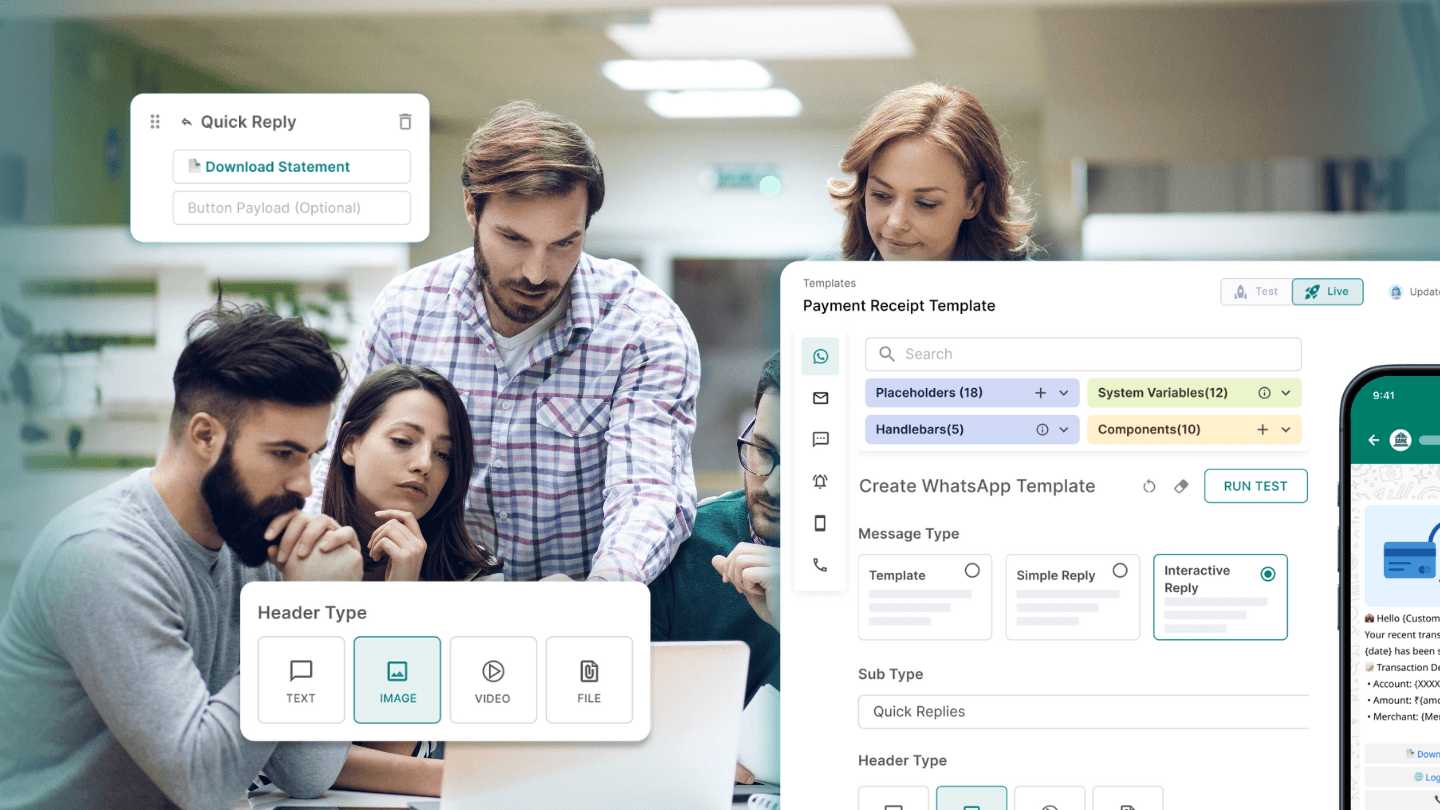Contents

Introduction
In the fast-paced world of fintech startups, staying connected with customers through timely notifications is crucial. Whether it's transaction alerts, service updates, OTPs, or payment reminders, these notifications are the lifeline of customer engagement.
However, it's a challenge fraught with uncertainties. The reliance on SMS as a primary communication channel often leads to delays or failures, leading to customer frustration and operational hiccups.
Ever been caught in the loop of repeatedly requesting an OTP, only to be met with silence? It's a more common scenario than one might think. Understanding and overcoming these challenges is essential, and the key lies in robust failover protocols.
Setting up a failover protocol that gets activated when your default delivery mechanism fails is key to delivering the best customer experience. But, establishing an effective failover protocol isn't straightforward.
Engineering Challenges
From an engineering perspective, setting up failover protocols involves meticulous planning and complex system configurations, which involves seamless integration between your systems and instantaneous switching of service providers to maintain communication fluidity. It requires a deep understanding of network dependencies, redundancy planning, and rigorous testing to confirm the efficiency of the failover protocol. Not to mention the precious time and resources it takes to complete this project.
After over 100s of discussions with engineering teams, we've arrived at the following as top 3 challenges that engineers generally face while building a failover protocol:
- Creating a robust and a reliable program to manage failover, and ensuring the code functions correctly at all trigger points.
- Managing asynchronous callbacks — making sure that the failover program is capable of recognizing an SMS delivery failure through a well-structured callback management system.
- Defining the timing for failover is complex. It requires a program that accurately determines what constitutes a failure — whether it's non-delivery within a specific timeframe, rejection of the request by the SMS provider, or other criteria.
Fret not! There is a simple and effective way to add a future-proof failover protocol for all your communication workflows. Wondering how? We’ve got the answer.
Planning your failover protocol with Fyno
There are two ways through which you can set up a failover protocols with Fyno:
- Single-channel routing
- Omni-channel routing
Single-channel routing
This method involves setting up another service provider of the same channel as a backup when your default provider fails to deliver a notification to a customer.
For example, if your primary communication channel is SMS, you can add two or more SMS providers to the routing flow. This way, when one provider fails to deliver the SMS, the second provider will attempt to deliver the same message. It is a simple and effective method.
This necessitates flexibility in your system to adapt to various use-cases. Fyno's managed notification infrastructure simplifies this intricate process, enabling you to set up routing workflows efficiently, without costing you precious time and resources.
With Fyno, you can add multiple service providers to a single routing workflow. You can distribute the load between the SMS providers, use the ‘Round Robin’ method to randomly assign a provider or set up a fallback system to kick in, in case of SMS delivery failure.
Omni-channel routing
Omni-channel routing is a smart way to deliver notifications to your customers.
Imagine a scenario where you’re sending an OTP to your customer. But, the customer is at a location where the mobile network is bad, but has a decent Wi-Fi connection. In this scenario, your SMS won’t reach the customer even if you attempt to send the message using multiple service providers. In those cases, you’ll have to try the omni-channel approach. You can try sending the message through other channels like WhatsApp or Email.
Platforms like Fyno make it easy for you to set up an omni-channel workflow by adding different service providers of various channels (WhatsApp, Email, or push notifications) to your routing workflow.
For example, you can use Fyno to set up a workflow that sends an SMS to a customer, waits for 20 seconds and if the SMS isn’t delivered, it will send the same message through WhatsApp. And, if WhatsApp is unreachable, it will try attempting the same through Email. This increases the probability of delivering critical notifications to a customer at the right time.
Why is Fyno the best platform to set up a failover system?
I can think of four reasons:
- 100% deliverability, guaranteed: Our failover protocols make sure your messages reach your customer, pronto.
- Intuitive drag-and-drop workflow builder: Fyno is designed keeping you in mind. Our user interface allows you to create complex workflows within minutes.
- Zero stress on your dev teams: The resultant API code in Fyno stays the same irrespective of the changes you make to your routing workflows. You can add or remove service providers, add a new logic, or even introduce a new communication channel. Everything is handled from Fyno’s end without needing you to make any changes to your codebase.
- Sizeable savings on communication costs: Smartly configure routing to stop sending messages on expensive channels if they have been read on the others.
Streamline deliverability with a future-proof failover protocol
Delivering timely and reliable notifications is key for fintech startups to provide an excellent customer experience. And setting up failover protocols through single and omnichannel routing workflows on platforms like Fyno future-proofs your communication infrastructure.
Interested in knowing more? Talk to us.


